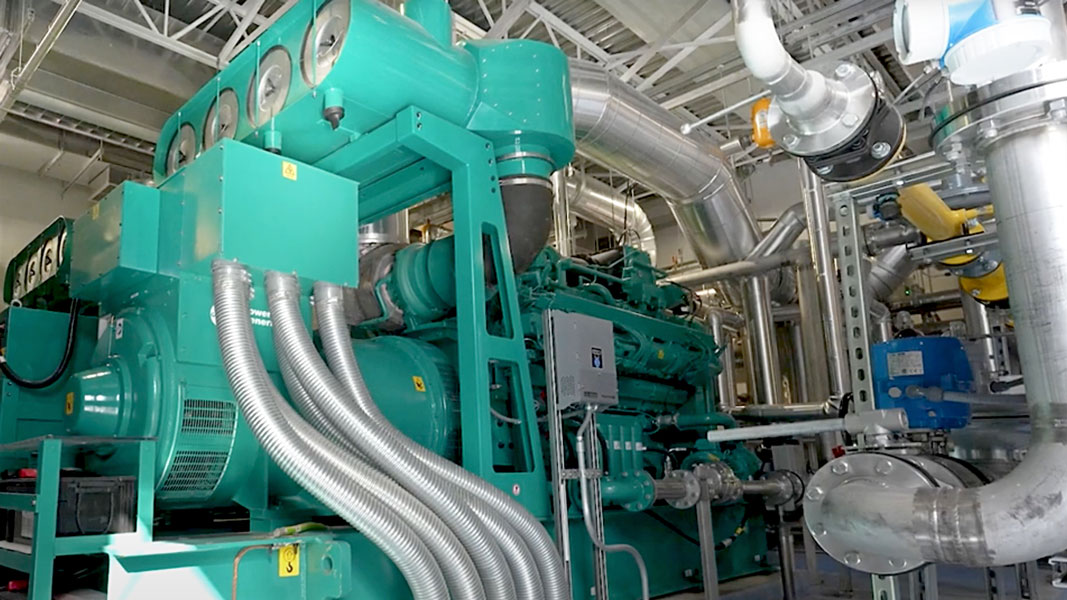Top: The majority of biogas systems at WWTPs generate electricity as the primary end use. Photo courtesy Derry Township (PA) Municipal Authority (video link)
In early 2024, the American Biogas Council (ABC) began a survey of 5,000 wastewater treatment plants (WTTPs) in the U.S. that have a daily throughput of at least one million gallons of wastewater/day (1 MGD) — the threshold above which biogas systems become more commonly economical. Research is ongoing, but based on primary research to date, ABC estimates that over 1,100 WWTPs in the U.S. have operational biogas capture systems. This equates to almost half of all biogas capture systems currently operating in the U.S. The Council estimates that biogas production capacity at WWTPs is 13% of the total U.S. biogas production capacity of 1.3 million standard cubic feet per minute. Today, 89% of biogas capture systems at WWTPs utilize their biogas output for energy production. Almost three-quarters list electricity generation as the primary end use, followed by heat production (13%). Renewable natural gas (RNG) is 4%. Historically, biogas systems have been used to reduce the volume of sludge that WWTPs have to manage once it’s removed from sewage — usually around 50% — with little or no attention on the energy value of the methane they’re capturing, notes Ian Taylor, ABC Data & Analysis Manager.













